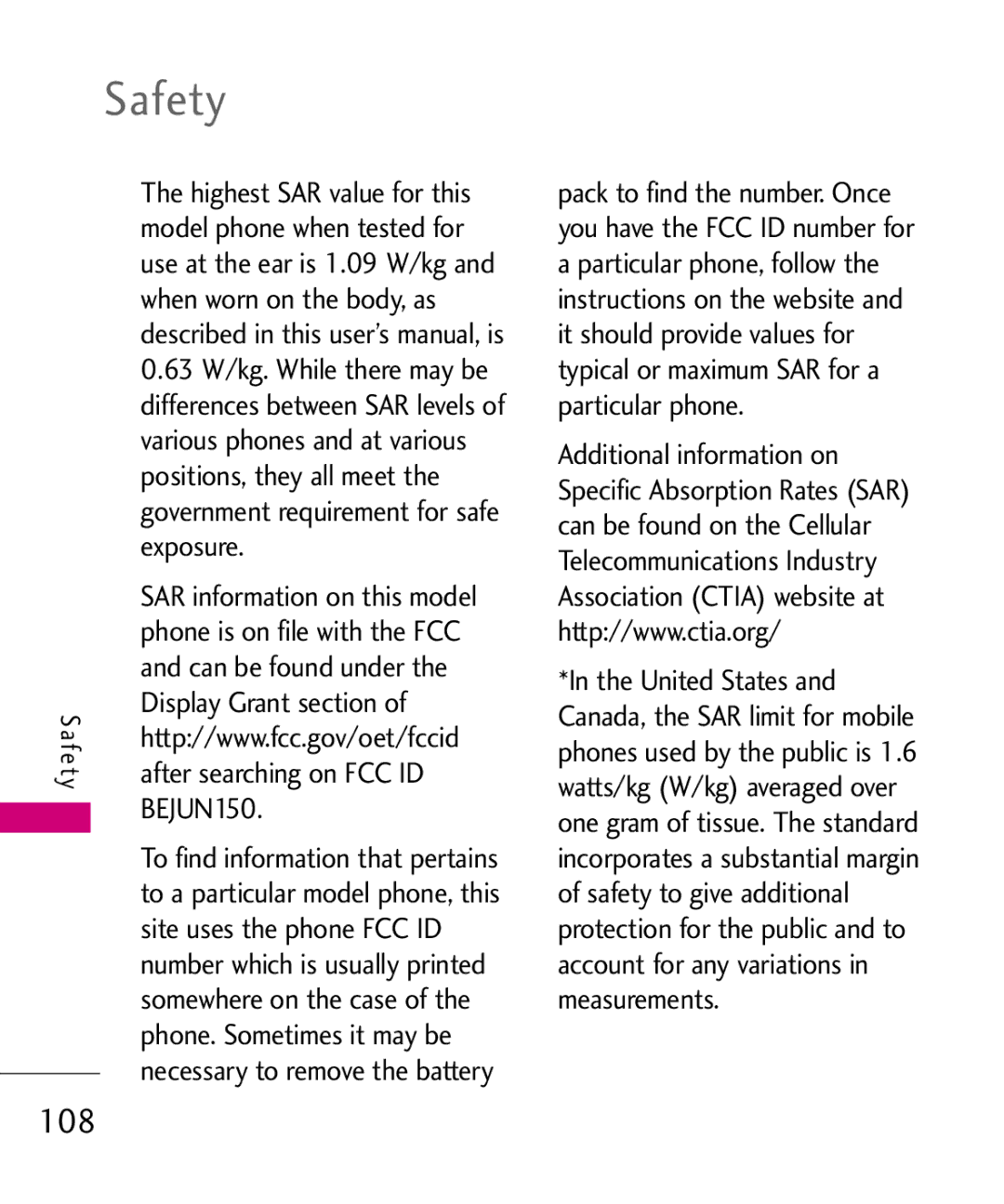Safety
The highest SAR value for this model phone when tested for use at the ear is 1.09 W/kg and when worn on the body, as described in this user’s manual, is
0.63W/kg. While there may be differences between SAR levels of various phones and at various positions, they all meet the government requirement for safe exposure.
|
| SAR information on this model |
Safety | phone is on file with the FCC | |
and can be found under the | ||
|
| Display Grant section of |
|
| http://www.fcc.gov/oet/fccid |
|
| after searching on FCC ID |
|
| BEJUN150. |
|
| To find information that pertains |
|
| to a particular model phone, this |
|
| site uses the phone FCC ID |
|
| number which is usually printed |
108 | somewhere on the case of the | |
phone. Sometimes it may be | ||
|
| necessary to remove the battery |
pack to find the number. Once you have the FCC ID number for a particular phone, follow the instructions on the website and it should provide values for typical or maximum SAR for a particular phone.
Additional information on Specific Absorption Rates (SAR) can be found on the Cellular Telecommunications Industry Association (CTIA) website at http://www.ctia.org/
*In the United States and Canada, the SAR limit for mobile phones used by the public is 1.6 watts/kg (W/kg) averaged over one gram of tissue. The standard incorporates a substantial margin of safety to give additional protection for the public and to account for any variations in measurements.
